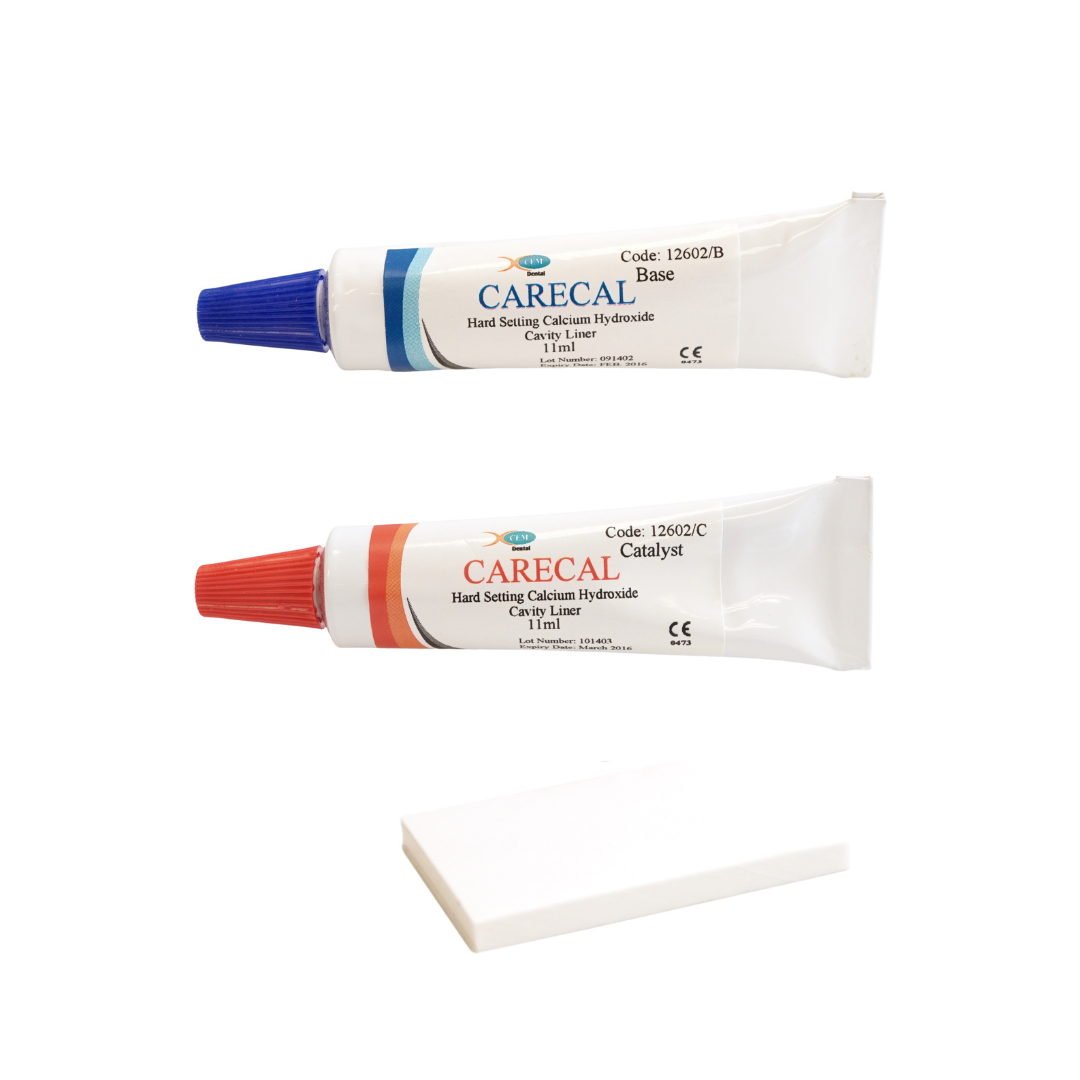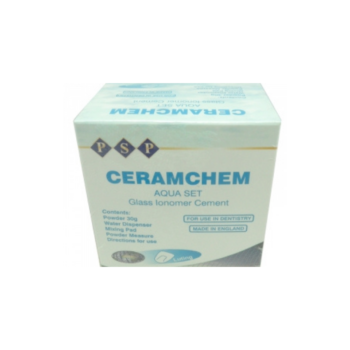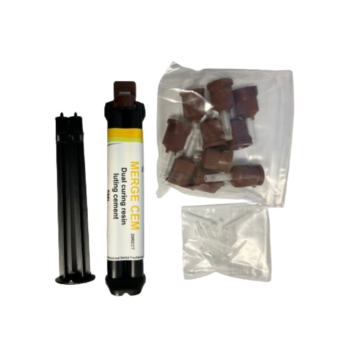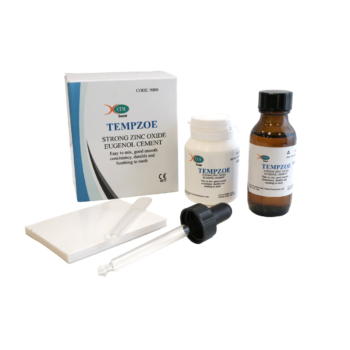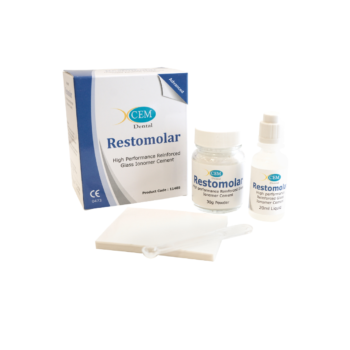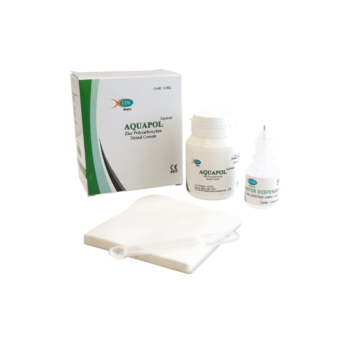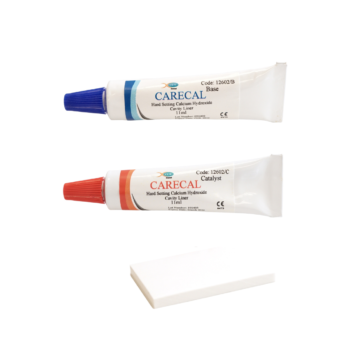- Calcium hydroxide based cavity liner
- Barrier to keep irritants from cement and restorative materials accessing dentinal tubules
- Good flow and a fast setting time
- Especially effective for chronic apical infections and cystic lesions
Carecal: A polymeric Calcium hydroxide based cavity liner, containing free Ca ions and high suitable as lining under all restoration.
Method:
Dry cavity.
Mix equal amount of base and catalyst paste on the provided mixing pad just prior to use.
Mix thoroughly for 10 seconds with a small spatula until it is a streak free.
Immediately place into the cavity and spread out to line the floor of the cavity.
It can also be used to cover exposed pulp.
After successful application, wipe the applicator tip thoroughly before replacing into the mix.
Characteristics:
Adequate work time.
Hard set.
Good flow.
Appropriate setting time in cavity.
In case of exposures or near exposures, it maintains the pulp vitality.
It promotes formation of reparative dentin.
Against thermal shock, it insulates pulp.
Carecal protects pulp from permanently placed fillings.
It is resistant to acid etching.
It does not inhibit polymerization of acrylic or composite restoration.
It is a radiopaque product.
Storage Conditions:
5°C-17°C unopened.
12°C-25°C once opened.
Store away from high temperature.
Working Time:
Mixing and Working time on mixing pad:
Minimum 6-7 minutes at 24°C and 50% humidity.
Note: With humidity and temperature, setting and working time decrease.
Cautions:
Only dispense prior to use.
Do not use if patient has a known allergy to any of its component
Do not contact with skin/eyes, in case of contact, wash immediately with plenty of water or use eye washer to clean the eyes, or seek medical advice if necessary.
Irritant, do not apply to soft tissues.
Do not leave open.
Before replacing the colour coded caps, always wipe the nozzle of each tube.
Do not store in humid area.
Always store in dry conditions.
Do not interchange the caps to avoid cross contamination.
Always replace the correctly colour coded caps to the tubes.
Keep nozzle clean and replace the caps securely between uses and after use.
When using the product in dry conditions, i.e. rubber dam, using the acid-etch technique,
there may be less moisture, therefore add a small drop of water on the cavity liner to let the material set quickly.
Some bonding agents, such as, enamel bonding agents(chemically cured), dentin or enamel bonding agents and some other dentin or enamel bonding agents which are light activated, acquire a high level of benzoyl peroxide and may cause discolouration to the product.
Therefore test the material compatibility by adding bonding agents before using it onto the cavity liner.

